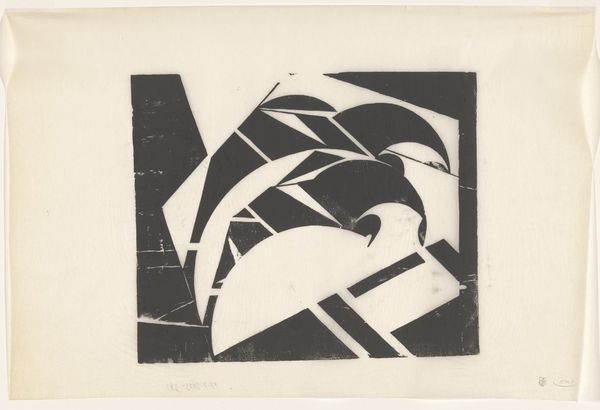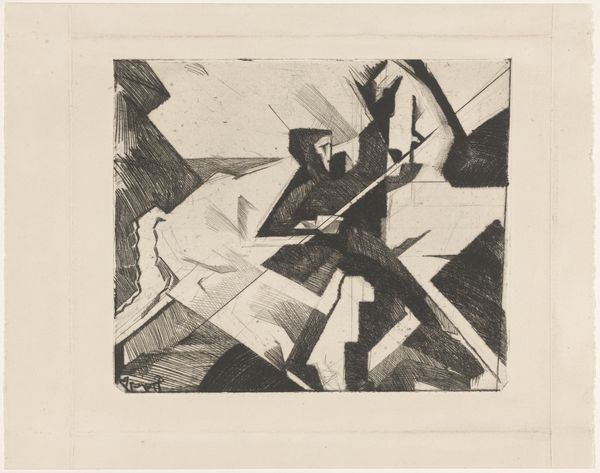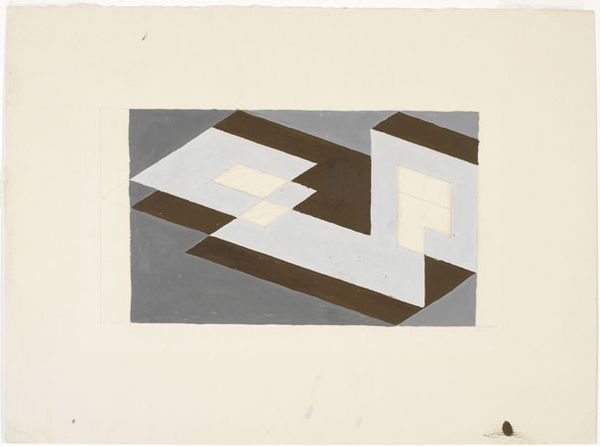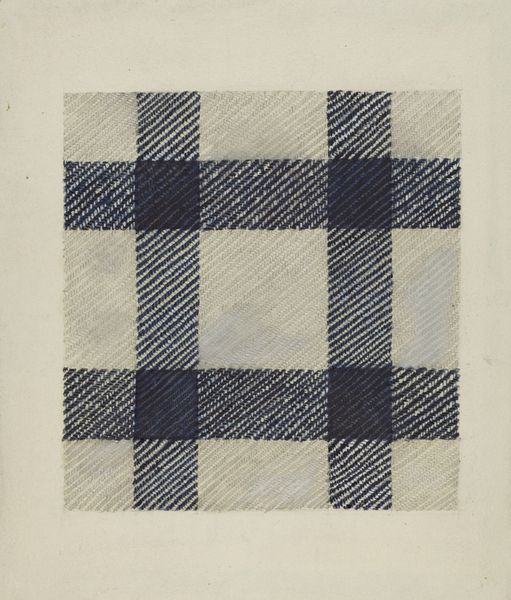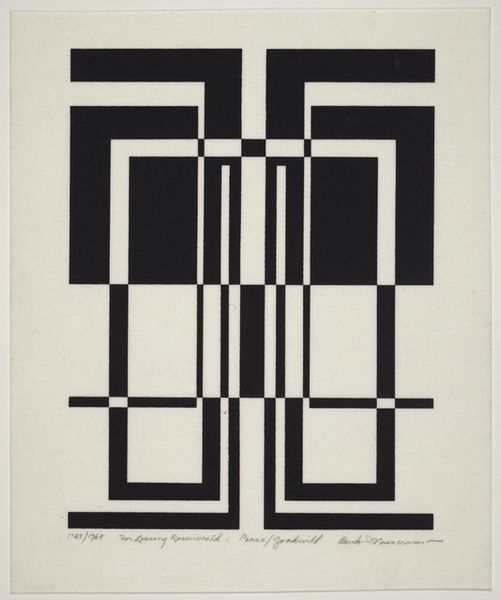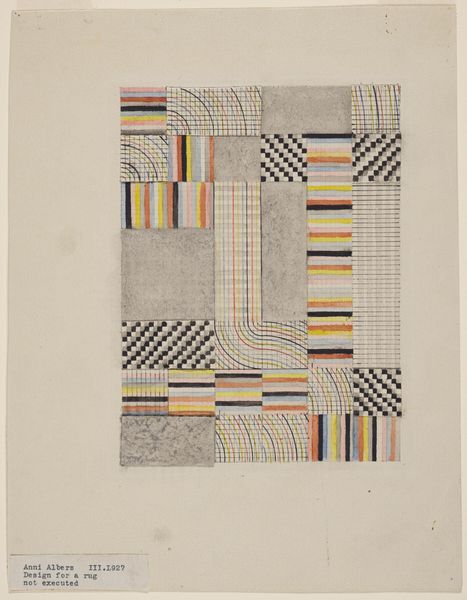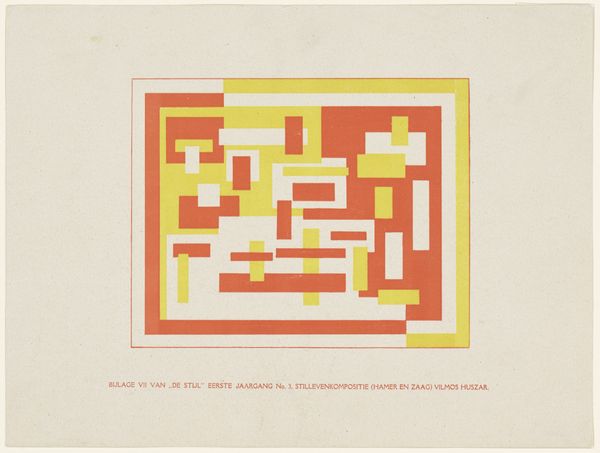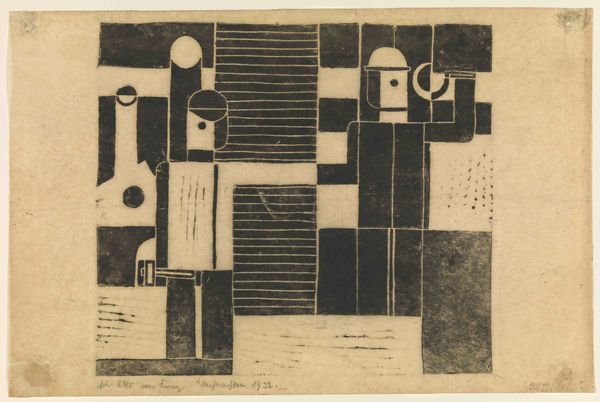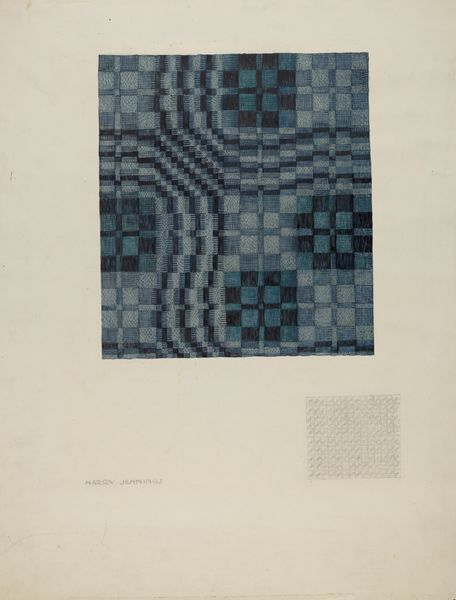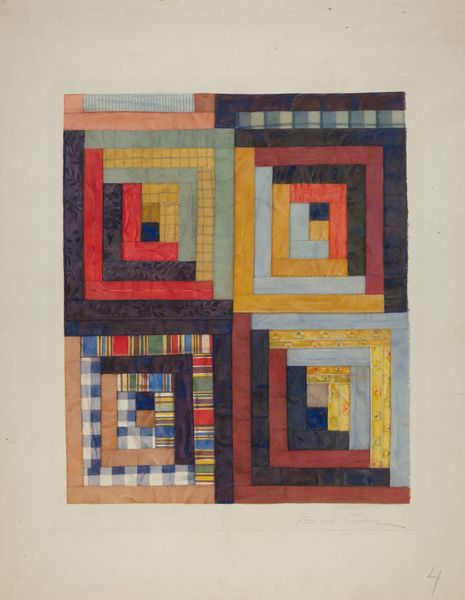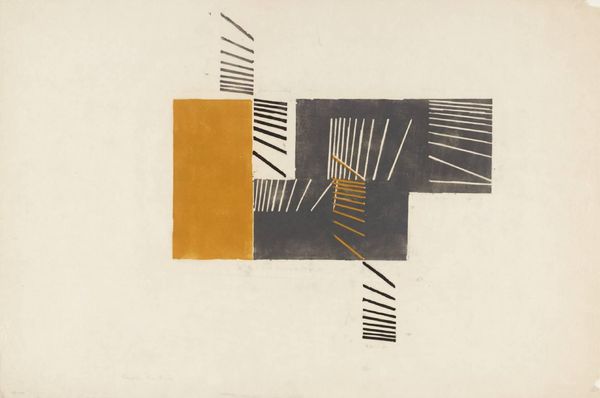
drawing, paper, ink
#
drawing
#
cubism
#
linocut
#
paper
#
ink
#
linocut print
#
geometric
#
abstraction
Dimensions: height 150 mm, width 196 mm
Copyright: Rijks Museum: Open Domain
Editor: Here we have Reijer Stolk's "Ruiter te Paard," created around 1920. It's an ink drawing on paper, quite geometric and abstract. Honestly, at first glance, it's hard to even see the horse and rider. What’s your take on this piece? Curator: You know, I love that you mention seeing *through* the abstraction, because in a way, that’s exactly what Stolk is asking us to do. Forget the easy read, darling! Doesn't it almost feel like he's offering us the blueprints for a horse and rider, rather than the finished sculpture? And what does that *mean*, right after the first World War? What’s been broken down, and what’s waiting to be rebuilt? Editor: Blueprints... that's an interesting way to put it! The sharp lines definitely feel… precise. Are you suggesting the Cubist style here reflects the trauma and rebuilding after the war? Curator: Precisely! Or, imprecisely – ha! Consider it. Cubism shatters perspective, presenting multiple viewpoints simultaneously. WWI shattered Europe. Stolk, like other artists of the time, wrestled with fragmentation. Is he depicting a literal horse and rider, or is he deconstructing and then attempting to reconstruct an image of power, of tradition? Look how solid some of the forms feel, next to those jagged edges! Editor: So, the solid forms offer a sense of hope or… stability maybe? It definitely gives me something to consider – that art can reflect such immense historical events on an emotional, symbolic level. Curator: Exactly! And isn't it wild how much weight these simple lines and shapes can carry? This little drawing holds a whole world! Editor: I'll definitely look at abstract art differently from now on. Thanks for showing me what's beneath the surface.
Comments
No comments
Be the first to comment and join the conversation on the ultimate creative platform.

